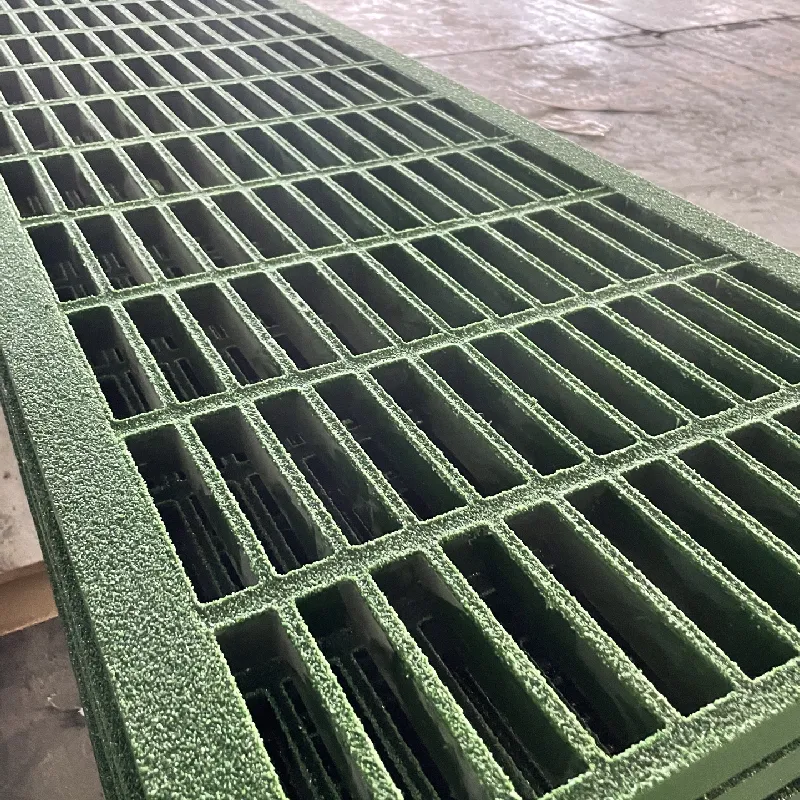loading...
- No. 9, Xingyuan South Street, Dongwaihuan Road, Zaoqiang County, Hengshui, Hebei, China
- admin@zjcomposites.com
- +86 15097380338
- Welcome to visit our website!
Molded Grating Solutions for Efficient Drainage and Ventilation Applications
The Versatility and Benefits of Moulded Grating
Moulded grating is an innovative solution widely used across various industries due to its exceptional properties and adaptability. It has become a go-to option for flooring, walkways, and platforms, especially in environments that demand durability and resistance to harsh conditions. This article explores the characteristics, advantages, and applications of moulded grating while highlighting why it has gained significant traction in recent years.
What is Moulded Grating?
Moulded grating is constructed from composite materials, primarily fiberglass reinforced plastic (FRP). The manufacturing process involves blending fiberglass with a resin that is then poured into a mould to create a rigid and robust structure. This method allows the production of grating panels that are not only lightweight but also incredibly strong, making them suitable for a variety of applications.
Key Characteristics
1. Corrosion Resistance One of the standout features of moulded grating is its excellent resistance to corrosion. Unlike traditional metal grating, which can rust or degrade over time when exposed to moisture or chemicals, moulded grating maintains its integrity and appearance, even in the most challenging environments.
2. Lightweight Yet Strong The use of fiberglass as a primary material allows moulded grating to have a high strength-to-weight ratio. This means that, while it is easy to handle and install, it does not compromise on load-bearing capacity, making it ideal for heavy-duty applications.
3. Safety Features Many types of moulded grating come with slip-resistant surfaces, enhancing safety for individuals walking on them. This feature is vital in industrial settings or areas prone to spills or wet conditions.
4. UV Resistance Moulded grating can also be treated to resist ultraviolet (UV) light, further extending its life cycle, especially in outdoor applications. This UV resistance helps maintain its color and structural integrity over time.
Advantages of Moulded Grating
The benefits of moulded grating extend beyond its physical attributes
. Here are some reasons it is increasingly preferred1. Low Maintenance Moulded grating does not require regular maintenance like painting or treatment to protect against corrosion, saving both time and money in the long run.
moulded grating

2. Environmental Impact Many manufacturers of moulded grating are dedicated to sustainable practices, using recyclable materials in their production processes. This commitment to the environment is becoming a key consideration for many businesses today.
3. Customization Moulded grating can be manufactured in various sizes, colors, and designs, allowing for customization to meet specific project requirements. This flexibility makes it suitable for a wide array of architecture and design.
4. Easy Installation The lightweight nature of moulded grating simplifies the installation process, reducing labor costs and time associated with setting up flooring or walkways.
Applications
Moulded grating is utilized in a multitude of industries, including
1. Chemical Processing Plants Its chemical resistance makes it perfect for environments where corrosive substances are handled.
2. Water Treatment Facilities The durability and non-corrosive properties of moulded grating make it ideal for water treatment applications, ensuring safety and reliability.
3. Food Processing In food manufacturing, the slip-resistant and easy-to-clean surfaces help maintain hygiene standards, making moulded grating a top choice.
4. Construction Sites Temporary walkways are often constructed with moulded grating due to its strength and portability, allowing for safe movement over rough terrain.
Conclusion
Moulded grating is a highly versatile product that stands out for its durability, safety, and eco-friendliness. Whether in industrial settings, commercial buildings, or environmental applications, its benefits cannot be overstated. As industries continue to seek efficient and sustainable solutions, moulded grating will undoubtedly remain a preferred choice for many applications, paving the way for a robust future in material innovation.
-
The Rise of FRP Profiles: Strong, Lightweight, and Built to LastNewsJul.14,2025
-
SMC Panel Tanks: A Modern Water Storage Solution for All EnvironmentsNewsJul.14,2025
-
GRP Grating: A Modern Solution for Safe and Durable Access SystemsNewsJul.14,2025
-
Galvanized Steel Water Tanks: Durable, Reliable, and Ready for UseNewsJul.14,2025
-
FRP Mini Mesh Grating: The Safer, Smarter Flooring SolutionNewsJul.14,2025
-
Exploring FRP Vessels: Durable Solutions for Modern Fluid HandlingNewsJul.14,2025
-
GRP Structures: The Future of Lightweight, High-Performance EngineeringNewsJun.20,2025
